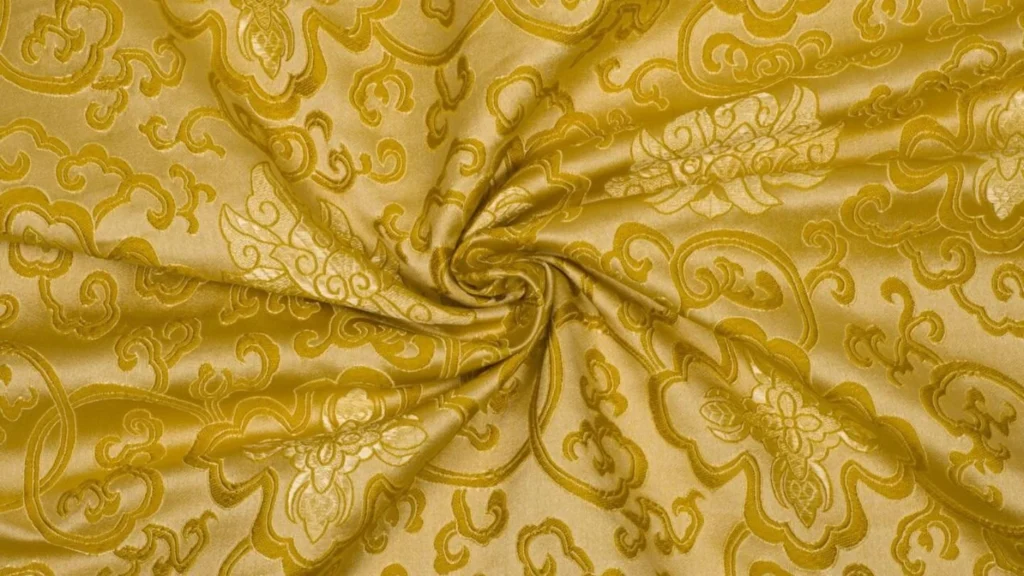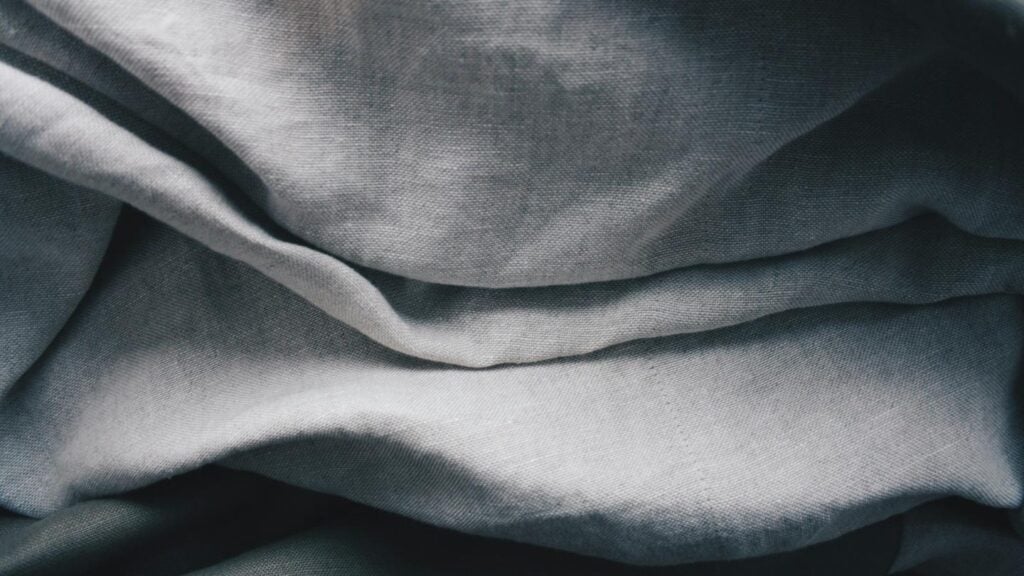2 – Benefits of Choosing Canvas Fabric
3 – Canvas Fabric vs Other Fabrics
4 – How Canvas Fabric Is Manufactured
5 – Common Uses in Fashion
6 – Understanding the Environmental Impact of Canvas Fabric
7 – Exploring Price Points and Value for Money
8 – Conclusion
9 – FAQs
What is Canvas Fabric?
Canvas fabric is a durable, heavy-duty textile known for its strength, versatility, and timeless appeal. Traditionally made from cotton or linen fibers, canvas is woven using a plain weave technique that produces a dense, sturdy surface ideal for a wide range of applications. Its robust construction makes it resistant to wear and tear, which is why it has been favored for centuries in products requiring longevity and toughness, such as sails, tents, bags, and artist painting surfaces. Modern canvas fabrics may also include blends with synthetic fibers like polyester to enhance water resistance and durability. Key characteristics of canvas fabric include:
- Composition: Typically 100% cotton or linen; can also be blended with polyester or other synthetic fibers.
- Weave: Plain weave, providing a tight, even texture that contributes to its strength.
- Weight: Heavier than standard fabrics, contributing to its durability and structural integrity.
- Versatility: Used in fashion (bags, shoes, jackets), industrial goods (tarps, tents), and creative arts (painting canvases).
- Durability: Naturally tough and abrasion-resistant, suitable for both indoor and outdoor use.
- Breathability: Despite its thickness, canvas allows airflow, making it comfortable for wearable items.
Understanding what canvas fabric is helps appreciate why it remains a popular choice across industries, combining practicality with a rustic, classic aesthetic that appeals to both designers and consumers.
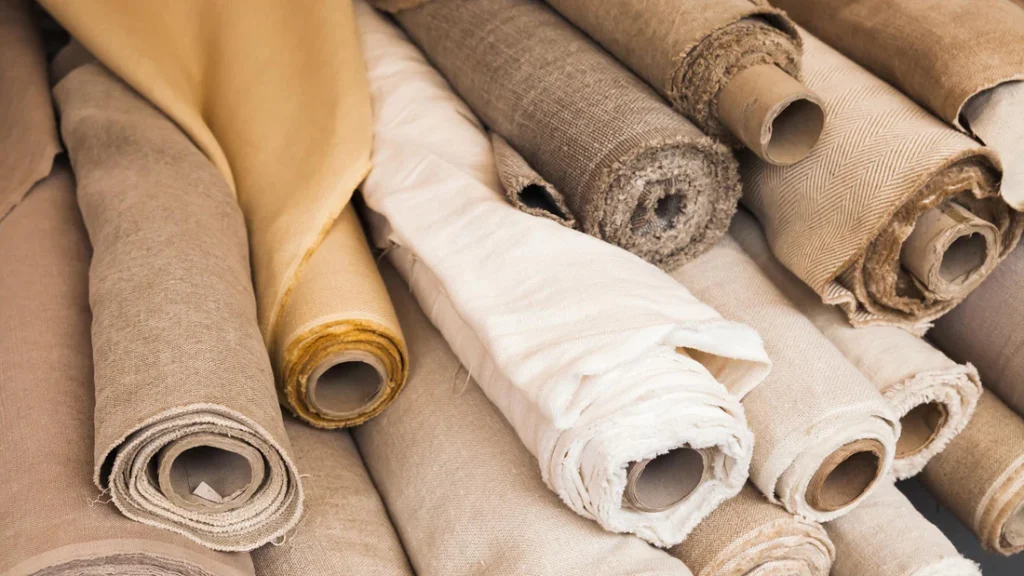
Benefits of Choosing Canvas Fabric
Canvas fabric offers a range of advantages that make it an excellent choice for many products and applications. Its unique combination of durability, versatility, and aesthetic appeal brings tangible benefits both for manufacturers and end users. Some of the key benefits include:
- Exceptional Durability: Canvas is woven tightly with thick yarns, resulting in a strong fabric that withstands heavy use, abrasion, and stress without easily tearing or wearing out. This makes it ideal for items like backpacks, workwear, and outdoor gear.
- Water Resistance and Weatherability: While natural cotton canvas absorbs water, it can be treated with waterproof coatings or blended with synthetic fibers to create water-resistant and weatherproof materials, perfect for outdoor tents and awnings.
- Breathability and Comfort: Unlike many synthetic heavy-duty fabrics, canvas allows air to circulate, reducing sweat and moisture buildup, which adds comfort when used in clothing and bags.
- Eco-Friendly and Natural: Canvas made from organic cotton or linen is biodegradable and environmentally friendly compared to synthetic alternatives, aligning with sustainable fashion and production trends.
- Versatility in Design: The sturdy yet flexible nature of canvas allows it to be dyed, printed, or painted on easily, making it a favorite for fashion designers, artists, and manufacturers of home décor.
- Low Maintenance: Canvas is generally easy to clean and maintain, often just requiring spot cleaning or gentle washing without compromising the fabric’s integrity.
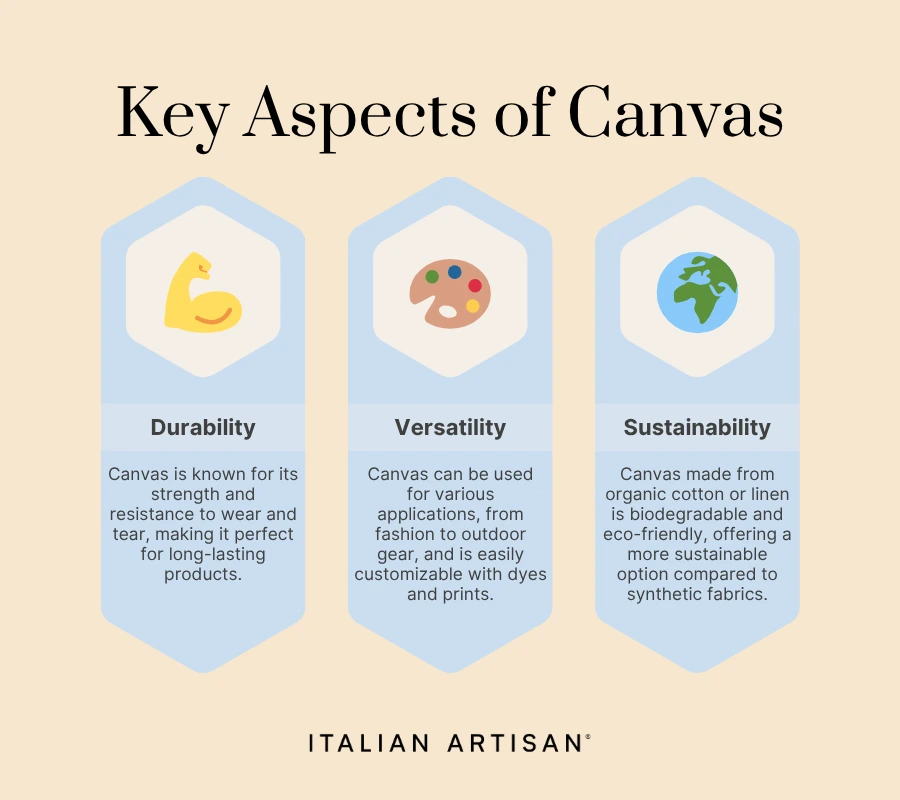
Canvas Fabric vs Other Fabrics
When choosing fabric for projects or products, understanding how canvas compares to other textiles helps clarify its distinct advantages and appropriate uses. Unlike lighter, more delicate fabrics such as cotton voile or silk, canvas is a heavyweight fabric known for its durability and structural strength. Here’s how canvas stacks up against some common fabrics:
- Canvas vs Cotton: While both can be made from cotton fibers, canvas is woven much more tightly and with thicker yarns, resulting in a sturdier, heavier fabric. Regular cotton fabrics like poplin or broadcloth are softer and more breathable but lack canvas’s ruggedness and longevity.
- Canvas vs Denim: Denim and canvas share similar toughness and are both used in durable clothing and accessories. However, denim usually features a twill weave, giving it a diagonal rib pattern and more flexibility, whereas canvas’s plain weave creates a more uniform, stiff texture.
- Canvas vs Polyester: Polyester fabrics are generally lighter and more water-resistant than untreated natural canvas. However, polyester can lack breathability and the natural feel of cotton or linen canvas. Canvas blended with polyester can combine durability and water resistance while maintaining comfort.
- Canvas vs Linen: Linen canvas tends to be less dense but highly breathable, with a distinct texture and natural sheen. Pure linen canvas is rarer and often used in fine art canvases or luxury goods, while cotton canvas is more common in everyday applications.
- Canvas vs Nylon: Nylon is lighter and often more water-repellent than canvas, favored in technical gear like backpacks or tents. However, nylon’s synthetic nature can feel less natural and lacks the aesthetic warmth and eco-friendly qualities of natural canvas.
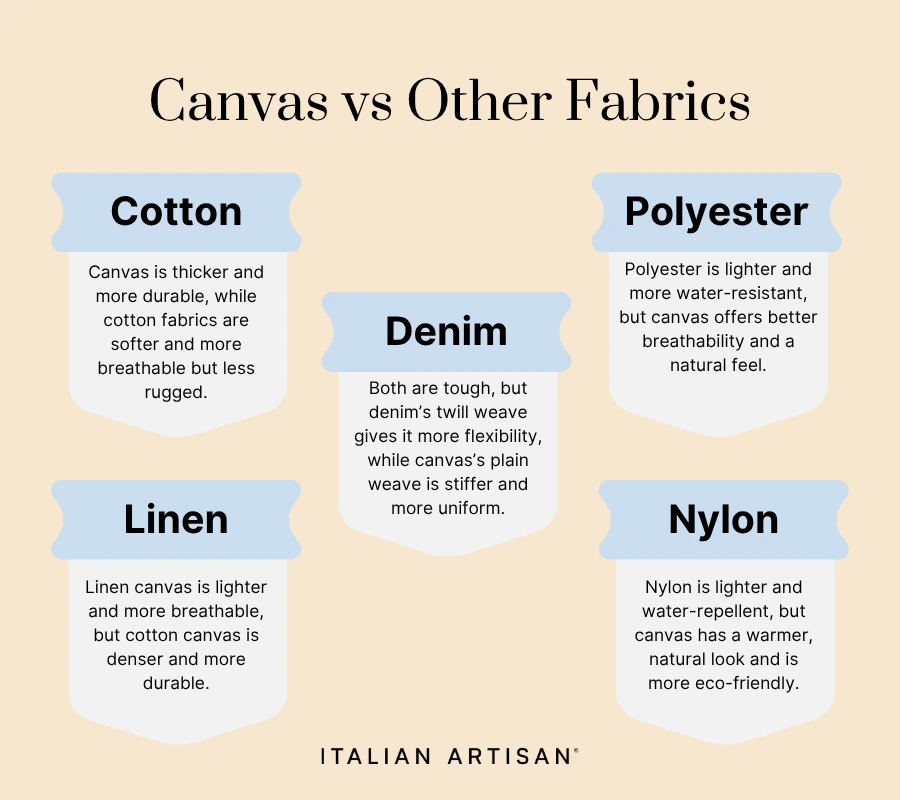
How Canvas Fabric Is Manufactured
The manufacturing of canvas fabric is a carefully controlled process that transforms raw natural fibers into a heavy-duty textile known for its strength and durability. The journey starts with the selection of fibers, primarily cotton or linen, chosen for their robustness and ability to be spun into thick, resilient yarns.
- Fiber Preparation:
The raw fibers are first cleaned to remove impurities like seeds, dirt, and oils. In the case of cotton, this involves ginning, while linen requires retting and scutching to extract the flax fibers. The cleaned fibers are then carded—a process that disentangles and aligns them into thin, continuous strands called slivers. - Spinning:
The slivers undergo spinning, where they are twisted to form yarns. For canvas, the yarns are spun thicker and with tighter twists compared to lighter fabrics, increasing tensile strength and durability. - Warping:
In warping, yarns intended for the lengthwise (warp) direction of the fabric are wound onto beams under tension. This step ensures uniform tension and alignment on the loom, which is crucial for producing a consistent weave. - Weaving:
Canvas is woven using a plain weave pattern, the simplest and strongest weaving technique. On a loom, the warp yarns run vertically while the weft yarns run horizontally. Each weft thread passes alternately over and under each warp thread, creating a tightly interlocked fabric structure. The thickness and density of the yarns, combined with the tight plain weave, give canvas its signature toughness and abrasion resistance. - Finishing:
After weaving, the canvas fabric undergoes finishing treatments to enhance appearance and performance. Common finishes include bleaching or dyeing for color, calendering for smoothness, and coating with wax, oil, or synthetic materials to improve water resistance and durability. Some canvas fabrics are also treated to resist mildew and UV damage, making them ideal for outdoor use. - Inspection and Quality Control:
Throughout and after production, the fabric is carefully inspected for uniformity in weave, weight, and color consistency. Tests for tensile strength, tear resistance, and water repellency ensure the canvas meets the stringent standards required for its diverse applications.
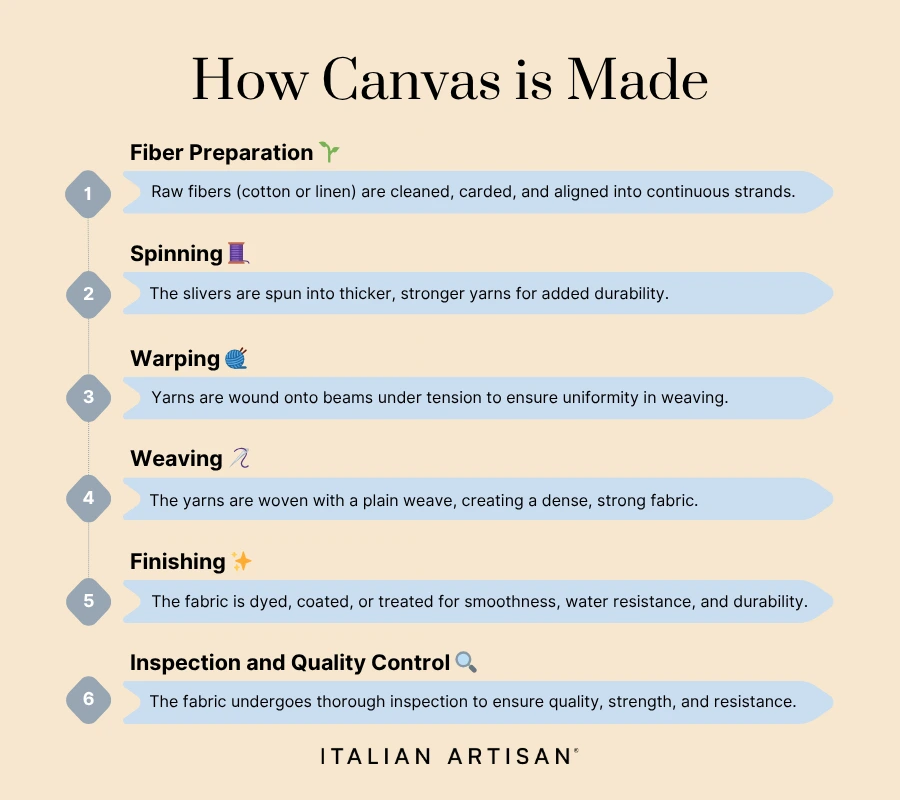
Produce your fashion collection with us
Common Uses in Fashion
Canvas fabric’s unique blend of durability, texture, and natural appeal makes it a popular choice in the fashion industry, especially for products that demand both style and sturdiness. Its heavyweight yet breathable nature allows designers to create functional, long-lasting pieces that age beautifully. Some of the most common uses of canvas fabric in fashion include:
- Bags and Backpacks: Canvas is widely used for tote bags, backpacks, and messenger bags due to its ability to withstand daily wear and heavy loads while offering a clean, classic look.
- Footwear: Many casual shoes, such as sneakers and espadrilles, feature canvas uppers for breathability, comfort, and a relaxed aesthetic.
- Outerwear and Jackets: Canvas jackets, especially in styles like chore coats or field jackets, benefit from the fabric’s wind resistance and durability, making them ideal for rugged yet stylish outerwear.
- Caps and Hats: Canvas is a favored material for caps and bucket hats, providing structure and durability while remaining lightweight.
- Aprons and Workwear: Thanks to its tough nature, canvas is often used in fashion-inspired workwear, including aprons, utility vests, and pants that combine practicality with streetwear appeal.
- Accessories: Beyond clothing, canvas is employed for belts, wallets, and watch straps, where strength and texture enhance both function and design.
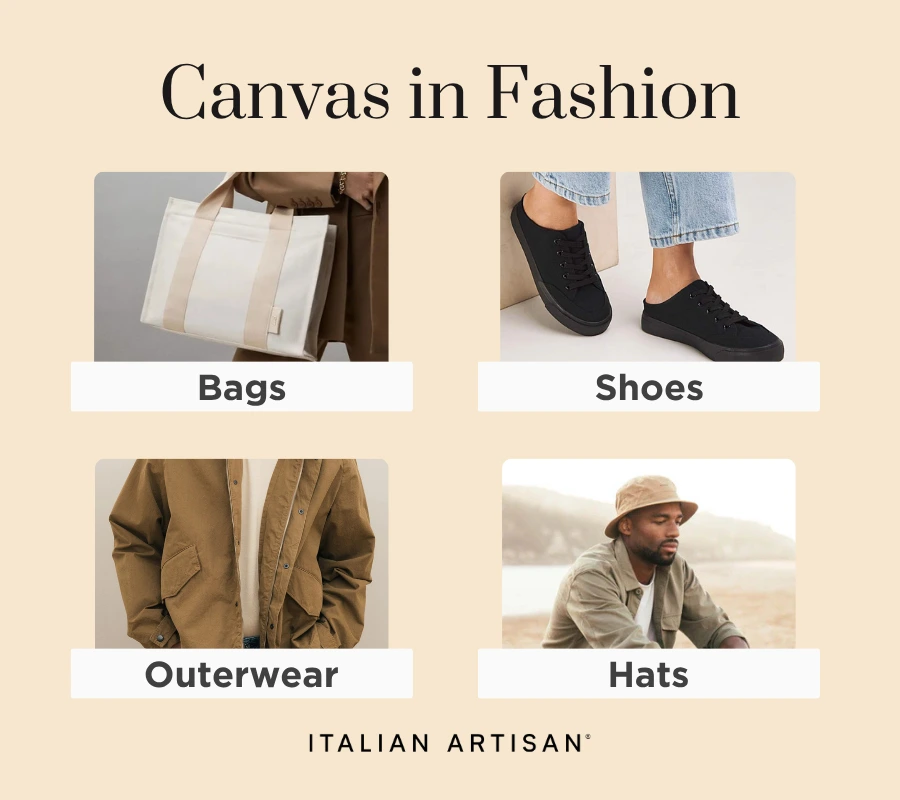
Understanding the Environmental Impact of Canvas Fabric
While canvas fabric is often praised for its durability and natural origins, its environmental impact depends largely on the source of the fibers and the production processes involved. Traditional canvas made from organic cotton or linen tends to have a lower ecological footprint compared to synthetic fabrics, as these natural fibers are biodegradable and renewable. However, cotton cultivation—especially conventional cotton—can be resource-intensive, requiring significant amounts of water, pesticides, and fertilizers, which contribute to soil degradation and water pollution.
Key environmental considerations include:
- Fiber Source: Organic cotton and linen grown without harmful chemicals offer a more sustainable alternative to conventional cotton, reducing pesticide use and promoting healthier soil.
- Water Usage: Cotton farming is water-intensive; thus, sourcing canvas from regions employing efficient irrigation or rain-fed agriculture helps minimize water consumption.
- Manufacturing Process: The dyeing, finishing, and coating of canvas fabrics may involve chemicals and energy consumption that impact the environment. Eco-friendly mills adopting water recycling and low-impact dyes reduce this footprint.
- Longevity and Waste: The inherent durability of canvas means products last longer, reducing the need for frequent replacements and lowering overall waste generation.
- Blended Fabrics: Some canvas fabrics incorporate synthetic fibers like polyester to enhance performance, but these blends can complicate recycling and increase microplastic pollution.
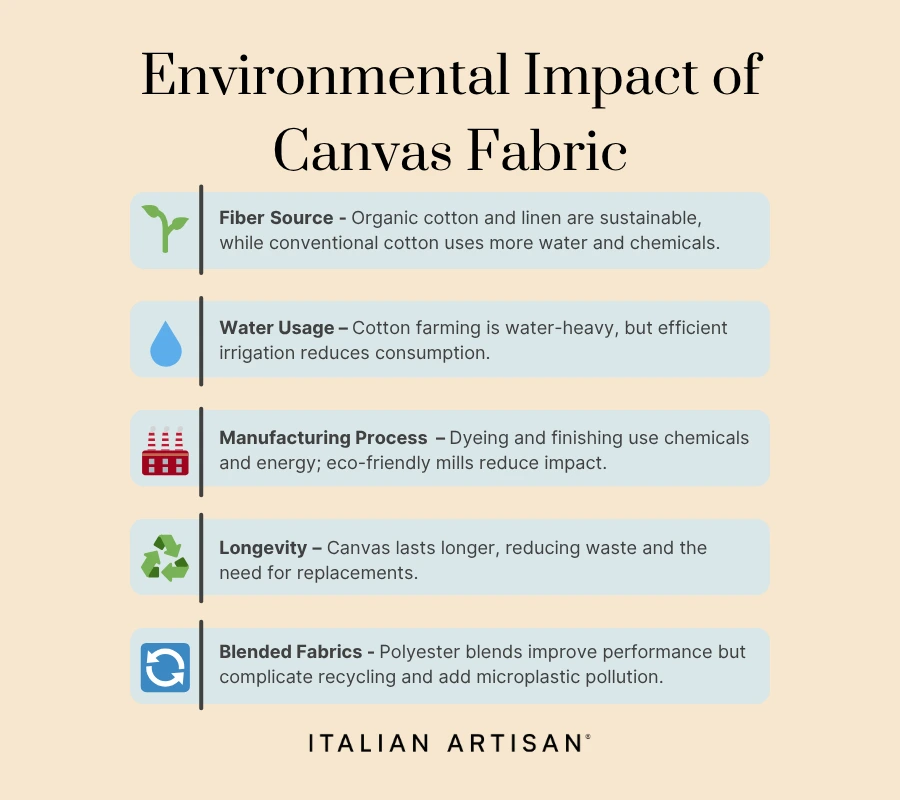
Exploring Price Points and Value for Money
Canvas fabric offers a strong balance between cost and durability, making it a smart choice for both manufacturers and consumers. Here are key points to consider regarding its price and value:
- Price Variation:
Canvas prices vary based on fiber quality, fabric weight, weave density, and treatments like waterproofing or special finishes.- Basic cotton canvas tends to be affordable and widely available.
- Heavier, organic, or coated canvases are more expensive due to better materials and enhanced features.
- Durability and Longevity:
Canvas is exceptionally durable, meaning products last longer and require fewer replacements, offering better value over time. - Premium vs. Basic:
While premium canvas has a higher upfront cost, its resistance to wear, tear, and weather usually justifies the investment. - Customization and Sustainability:
Options like organic fibers, eco-certifications, and custom finishes add value for brands focusing on quality and responsible sourcing. - Cost Efficiency:
Considering the fabric’s strength and versatility, canvas delivers a favorable price-to-performance ratio, ideal for products needing durability and style.
Conclusion
Canvas fabric stands out as a timeless and versatile textile that combines strength, durability, and natural beauty. From its traditional origins as a heavy-duty cotton or linen weave to modern innovations incorporating synthetic blends and eco-friendly treatments, canvas continues to meet diverse needs across fashion, art, and industry. Its unique composition and properties make it an ideal choice for products that demand longevity without compromising comfort or style. While price points vary, the exceptional value and sustainability potential of canvas fabric make it a smart investment for both brands and consumers. By understanding canvas fabric’s origins, manufacturing, benefits, and environmental impact, anyone can appreciate why it remains a beloved material in today’s world.

FAQs
What is canvas fabric made of?
Canvas is typically made from natural fibers like cotton or linen, but can also include synthetic blends such as polyester for enhanced durability and water resistance.
How is canvas fabric different from regular cotton?
Canvas is woven with thicker yarns and a tighter plain weave, making it heavier, stronger, and more durable than standard cotton fabrics.
Is canvas fabric waterproof?
Natural canvas is not inherently waterproof, but it can be treated with coatings like wax or polyurethane to make it water-resistant or waterproof.
What are the common uses of canvas fabric?
Canvas is widely used for bags, backpacks, shoes, jackets, tents, sails, artist canvases, and workwear due to its strength and versatility.
How should I care for canvas fabric?
Canvas should be cleaned gently—usually spot cleaning or mild washing—to preserve its durability. Waterproofed canvas may require specific care to maintain coatings.
Is canvas fabric environmentally friendly?
Canvas made from organic cotton or linen is biodegradable and more sustainable than synthetic fabrics, but conventional cotton cultivation can have a significant environmental footprint.
Can canvas fabric be dyed or printed on?
Yes, canvas accepts dyes and prints well, making it popular for fashion items and artistic applications.
What makes canvas fabric so durable?
Its tight plain weave and thick yarns create a dense, abrasion-resistant surface that withstands heavy wear and tear.
Is canvas fabric breathable?
Despite its weight and density, canvas allows airflow, which makes it comfortable for wearable items like shoes and jackets.
How do canvas fabric prices vary?
Prices depend on fiber quality, weight, treatments, and certifications, ranging from affordable basic canvas to premium organic or coated varieties.




